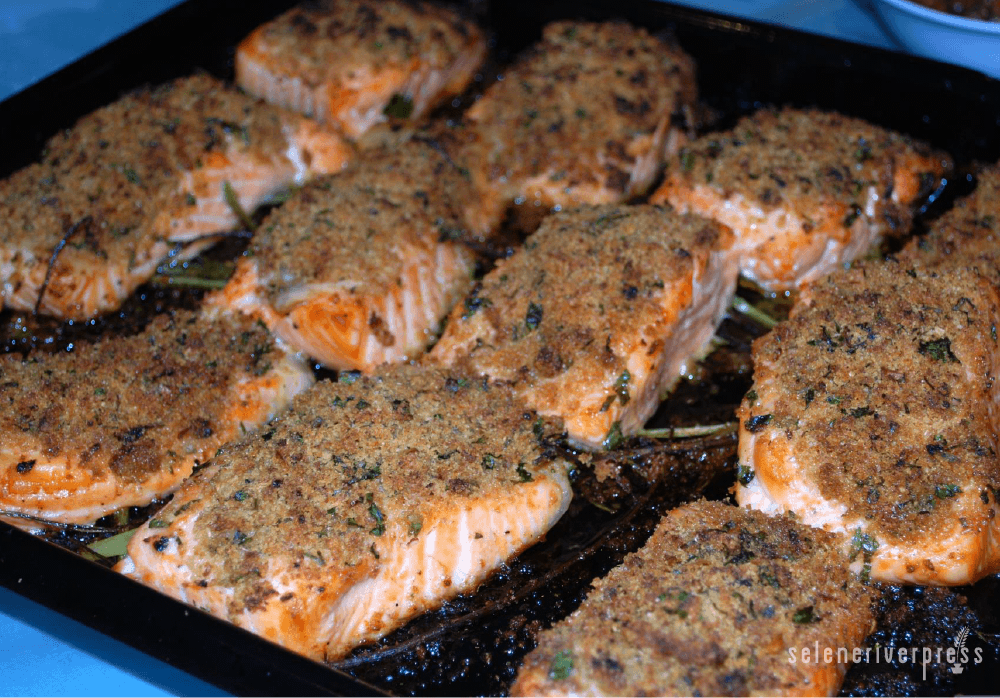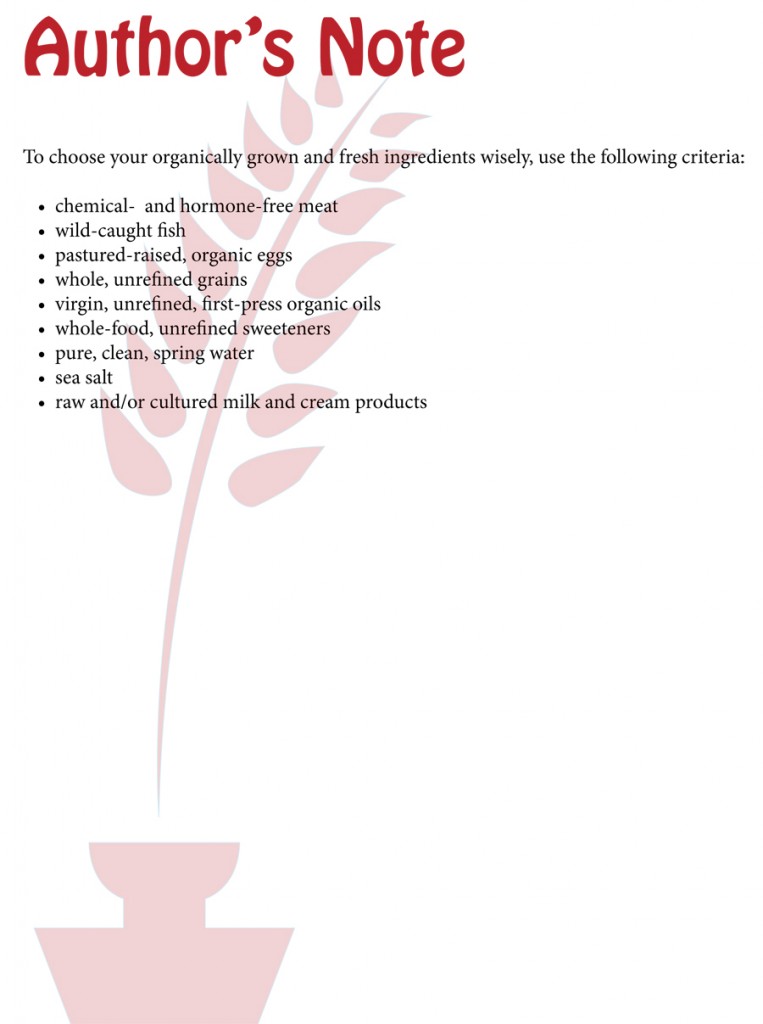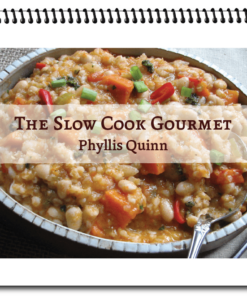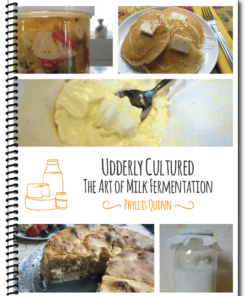Ask Chef Phyllis:
My aim is to prepare fish for my family at least once a week. In the past, I tried prepared frozen flounder (I think it was flounder) or cod fish fillets coated in egg and bread crumbs, which I usually pan or deep fry. Of course, the kids really like this the best, but one package is never enough and it’s loaded with ingredients besides fish that I don’t know. I tried making my own fried fish from recipes that I found on the Internet without much success. It either fell apart when I fried it or the kids didn’t like it. I want to try other fish like salmon or halibut. A hot new item at many of our local restaurants is nut-crusted fish, and it’s baked. I would like to find a recipe that would satisfy the whole family. Any suggestions? What am I doing wrong?
—Amanda Schroder, Galveston, TX
Nut-coated or crusted fish is very popular and also a nutritious way to get your family to try something new. You’re wise to stay away from packaged, bread-crumb coated, prepared fish—not enough fish for your dollar. In your area, locally caught flounder and halibut are good buys, and purchasing wild-caught whole salmon is economical as well. You can use the meatiest central portions of the whole salmon for grilling or baking, while the rest of the fish is ideal for chowder, salmon patties, or salmon salad (which I prefer to tuna).
Any nut coating is good, but coarsely ground pistachios are a great replacement for breadcrumbs when it comes to coating halibut and other white fishes. This recipe uses pistachios to get the crunch that breading provides, and the nuts add body to the fish if you choose to fry it.
For salmon, which is a stronger flavored fish, I suggest almonds or pistachios, along with ginger, dill, and lemon coating. (See additional recipe below.)
I do wish to point out a secret that restaurants have for preparing fish—one that you don’t. They use time as an ingredient. Restaurants will let the coated fish sit under refrigeration for a few hours before frying or cooking it. This method “sets” the crust so it won’t fall apart in the frying pan. In the future, as your family gets familiar with different tastes, I hope you consider oven baking—it’s the easiest way to cook perfect fish.
Ingredients for Fillets
1 egg
1 tablespoon warm water
1 teaspoon hot sauce (optional)
1½ cups raw, unsalted pistachios, coarsely ground (not pulverized)
1 tablespoon sesame seeds
Zest of 1 lemon
½ teaspoon dill or thyme
½ teaspoon each of sea salt and black pepper
2 tablespoons fresh Italian flat-leaf parsley, chopped
1½ pounds halibut, orange roughy, or flounder fillets
Parchment paper (optional)
Instructions
1. In a low, wide bowl, beat the egg with the tablespoon of warm water. Add hot sauce if desired.
2. In another low bowl or plate, add nuts, sesame seeds, lemon zest, dill or thyme, salt and pepper, and chopped parsley. Mix well.
3. Dip the fish fillets in the egg mixture. Remove fillets and coat evenly with the nut mixture, pressing with your hands to make the nuts adhere. Continue until all the fillets are coated.
4. Place the coated fillets on a platter, laying them out so they don’t touch each other. Cover loosely with plastic wrap. Refrigerate for 3 hours or longer. This secret step will help congeal the coating to the fish and prevent that whitish liquid from leaking out during cooking.
5. For pan-fried fillets: Pan fry in a large skillet over medium-high heat, about 2 minutes on each side for flounder, or 3 to 4 minutes for halibut or orange roughy. Lift fish from the pan and lay them gently on a paper towel. For baked fillets: Place fish on a baking sheet lined with buttered parchment paper and bake in a preheated 375°F oven for 15 to 20 minutes, or until the fish flakes.
6. Before serving, let the fish rest for 5 minutes. Lift them gently with a large spatula and serve with lemon slices or tartar sauce.
Ingredients for Salmon Portions
1 egg
1 tablespoon warm water
1 teaspoon hot sauce (optional)
1½ cups raw almonds, coarsely chopped, or unsalted pistachios, chopped
1 teaspoon ginger powder
1 teaspoon fresh ginger root (optional)
1 teaspoon dill
Zest of 1 lemon
1½ pounds salmon portions
Parchment paper (optional)
Instructions
1. In a low bowl, beat the egg with the warm water. Add hot sauce if desired.
2. In another low bowl or plate, add almonds or pistachios, ginger powder, ginger root, dill, and lemon zest.
3. Dip the salmon portions in the egg mixture. Remove salmon and coat evenly with the nut mixture, pressing with your hands to make the nuts adhere. Continue until all the salmon portions are coated.
4. Place the salmon on a platter, laying them out so they don’t touch each other. Cover loosely with plastic wrap. Refrigerate for 3 hours or longer. (I recommend this step if you choose to bake the fish.)
5. For baked salmon: Preheat the oven to 375°F. Lay the fish on a baking sheet lined with buttered parchment paper. Bake for 15 to 20 minutes. (Toss out the parchment paper for an easy cleanup.) For grilled salmon: grill on medium-high heat for 20 minutes total. No turning required for either grilling or baking.
Creative Commons photo by Alpha






